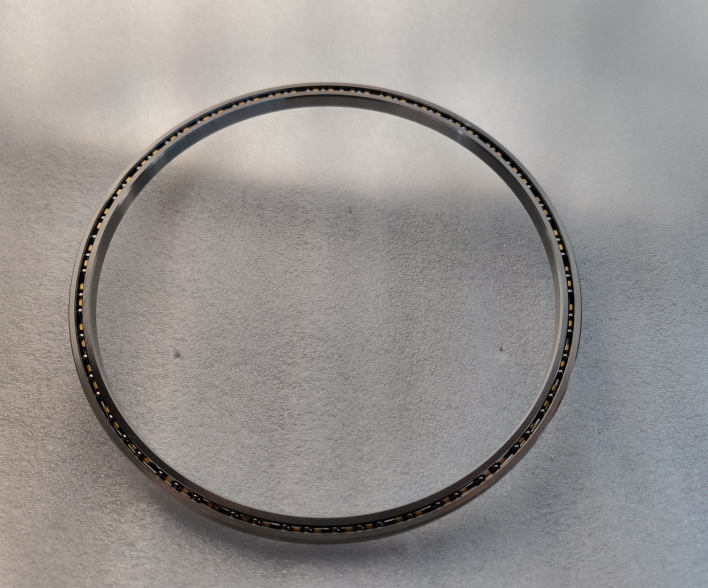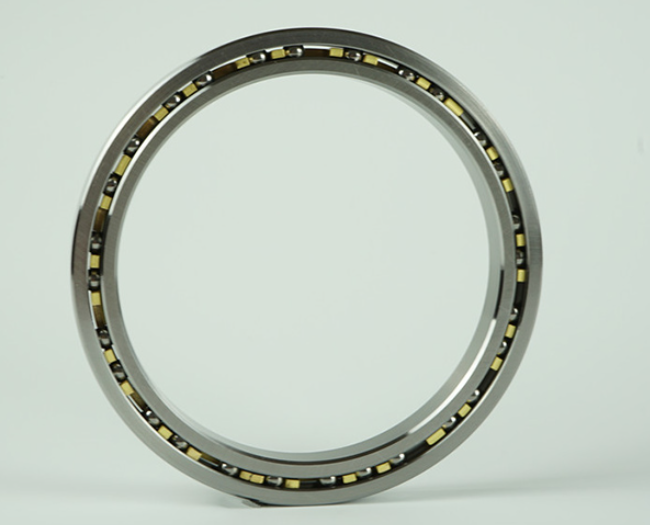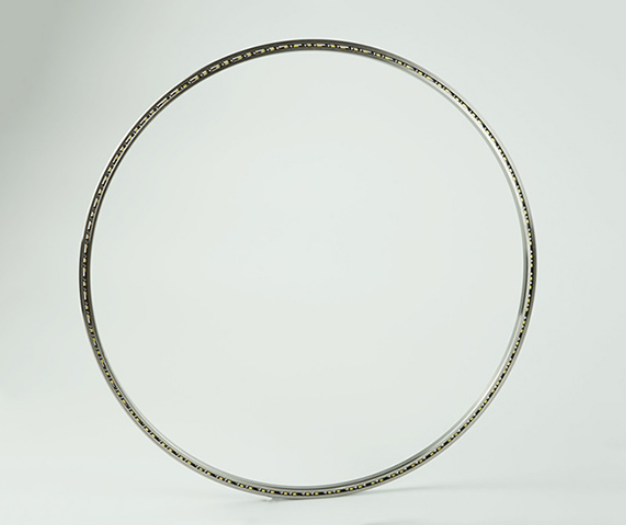Newsroom
What are the characteristics of thin-section ball bearings ?
2025-05-23Thin-section ball bearings (open type C) are one of the most common types of rolling bearings. A basic bearing typically consists of an outer ring, an inner ring, a set of steel balls, and a cage. There are two types: single-row and double-row. Thin-section ball bearings (open type C) are characterized by low friction resistance, high rotational speed, and the ability to withstand radial loads or combined loads acting both radially and axially. They can also be used in applications that mainly bear axial loads.

1.Sealing and Dust Protection:
Standard industrial seals are usually made of nitrile rubber. Silicone rubber and other materials can also be used for customized seals to meet high-temperature and other extreme condition requirements.
2.Coating:
For demanding corrosion resistance, a thin and dense chrome coating can be applied to enhance the bearing’s anti-corrosion capabilities. Unlike many traditional coatings, this layer does not peel or flake under pressure, maintaining its protective properties and minimizing wear. The performance of this coating has been proven in critical military, aerospace, and deep space applications.

3.Lubrication:
A full range of lubricants is available for thin-section ball bearings (open type C) to optimize performance in applications requiring moisture resistance, high or low temperatures, vacuum conditions, or low torque.
4.Internal Fit:
Thin-section ball bearings (open type C) can be designed with different internal fits to meet specific performance requirements. Lightly preloaded bearings are used in high-rigidity applications, while bearings with radial clearance are suitable for low-friction torque conditions. In contrast, standard cross roller bearings usually do not feature corrosion protection or custom seals, specialized greases, or high-temperature capability for extreme environments.

For more information, feel free to contact QIBR


